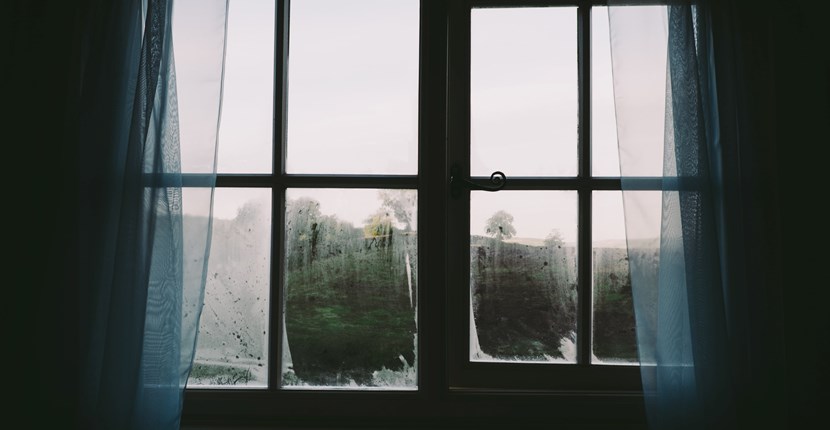Posted on 15 07 2022
Take the Damper out of Dampness

From an early age most of us learnt that mould and damp are the enemy. Our Grandmothers warned us against sleeping with our heads on an outside wall and threatened we’d “catch our death” if we spent too much time in the “end” room.
The reality is that mould is a health risk. If inhaled, it can cause an allergic reaction triggering an asthma attack. And mould damages clothing, furniture, and houses on its relentless path of destruction.
In the winter when the temperatures in many houses fluctuate as heating is turned on and off, mould grows quickly. A distinctive musty scent, wall discolouring or peeling wallpaper indicate a mould problem and its important homeowners take immediate evasive actions. .
What could be causing damp in your home
Mould is a fungi like mushrooms and yeast. Its constantly present indoors and outdoors and thrives in dampness for instance where moisture condensates or accumulates from a leak. Mould is common in wet areas like bathrooms and kitchens and in overly cold spots where temperatures fluctuate.
There are three key types of mould
- Condensation
Condensation is the most common form of dampness. When humidity condensates on cold surfaces it becomes a breeding ground for mould. It also remains as a source of humidity to continue the cycle as the room temperatures fluctuate with winter heating
Activities like cooking and showering, and even people breathing, raises humidity in living spaces. If ventilation is not adequate and there are under-heated spots the humidity will turn to condensation which will grow mould over time.
- Rising Damp
Moisture from the ground can come up through decayed skirting boards or uninsulated floors and cause decay. This becomes a breeding ground for mould.
- Penetration Damp
Water enters wall cavities through damaged guttering, flashings, cladding or plumbing pipes. Often this can go undetected for a long period until mould has taken hold and gives off a musty smell.
How to damper mould
The reality is that mould doesn’t completely go away. It continues to exist everywhere but needs moisture and nutrients to grow. The secret to controlling mould in the home is to identify and reduce dampness.
These are steps that every homeowner can take to prevent the growth of mould.
Regularly remove condensation
It’s important to remove condensation regularly. Wipe down windows and sills every morning. and periodically wash walls and window frames with a fungicidal wash.
Contain steam
Bathrooms and kitchens omit huge amounts or moisture through steam from ablutions and cooking. It’s important to prevent this moisture from travelling to a cold surface where it will condensate.
Ensure doors to these rooms are closed during activity, cook with lids on pots and open bathroom windows when showering. Install appropriate fans to extract the steam at its source.
Heat right
Condensation takes place when moisture that has been heated is suddenly cooled down, like when it moves from a heated living room to cold bedroom. Running heating that keeps temperatures consistent is important to avoid condensation.
Tips for Choosing the right heater https://genless.govt.nz/for-everyone/at-home/heat-and-cool-efficiently/heating-and-cooling-tips/
Ventilate
Ventilate continuously with a mechanical ventilation systems or air vents, and by keeping windows open permanently with stays. Fully opening a window for just 15 minutes a day can have a significant impact.
Reduce humidity
Not drying wet clothes indoors and limiting indoor fish tanks and water features are all ways to reduce room humidity. Pot plants also generate humidity. It can be helpful to move these into a common area over winter to better manage resulting condensation.
Dehumidifiers remove humidity from the air. They turn it back into water that can be discarded outside.
Insulation
If there are cold spots in a home where condensation builds-up, then it probably isn’t adequately insulated. Uninsulated walls, ceilings and single glazed windows allow heat loss of between 25% and 50%. Moisture can also seep in from outside.
Good insulation is effective in combatting all types of mould including rising damp. Solutions are varied and include options for ceiling, floor and walls, and double glazing. It’s advisable to consult an insulation specialist for advice.
Repair Leaks
If there are signs of water leaks find the source and make necessary repairs. There may be a damaged gutter or water pipe, or a hole in the roofing material. Sometimes leaks occur when drains become blocked and overflow. There are specialists who can take a moisture reading and help find the leak
Cleaning mould
Wipe away mould caused by condensation with a cloth dipped in soapy water then use a dry cloth to remove any moisture. Throw both cloths away and be careful not to brush the mould. This can release mould spores.
If you need help, contact us to arrange a free home assessment. You may be eligible for a subsidy.